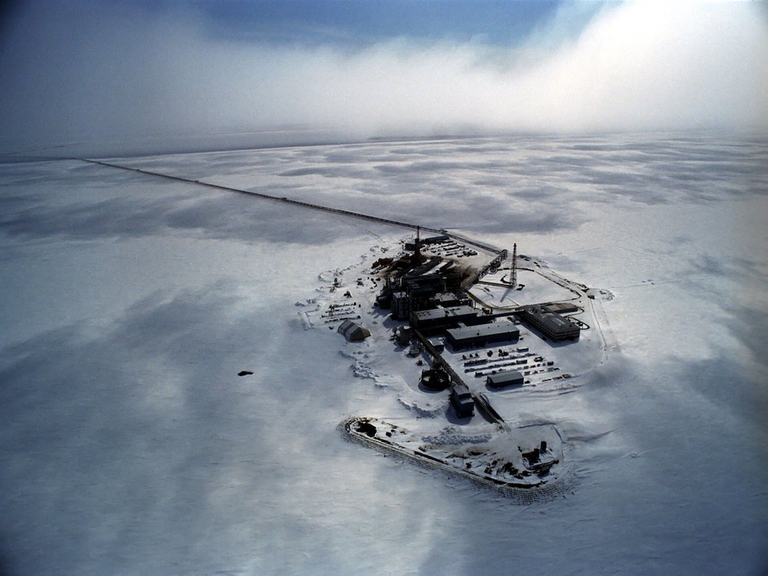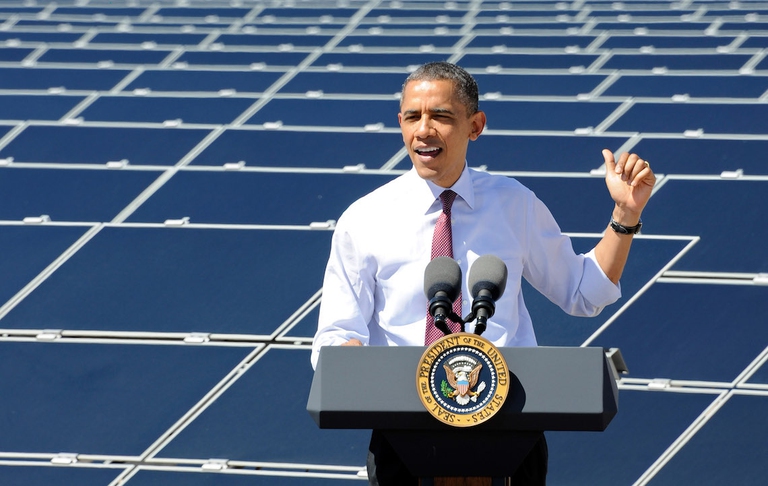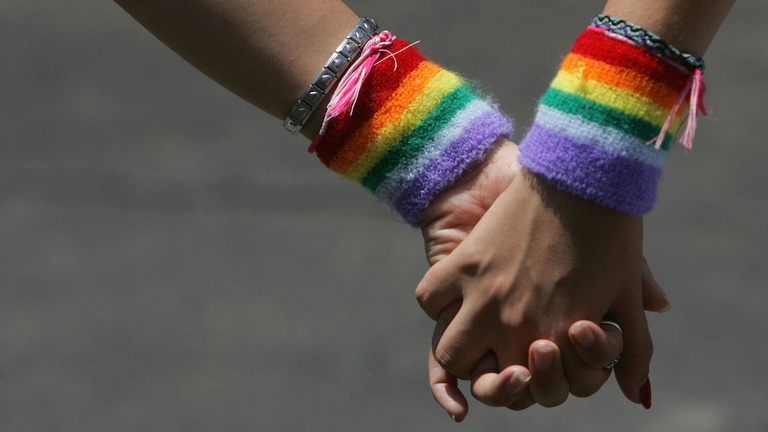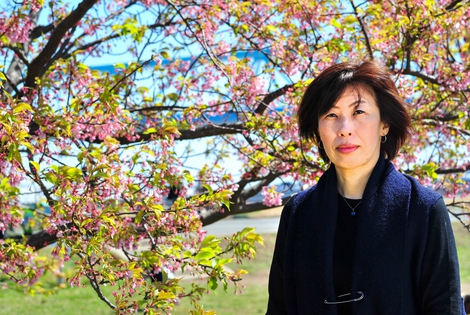
Three people putting the protection of the planet before themselves. Three powerful stories from Latin America, the deadliest region for environmental activists.
On the 20th of January Donald Trump celebrated his first year as leader of the United States. Environmental, social and foreign policies: here’s an overview of Trump’s first year.
Will Donald Trump keep his promises? Who will he choose to staff his government? What changes will he make first? These were the questions that everyone in the United States and around the world was asking about a year ago. At the time, the American billionaire had won the elections held on the 8th of November 2016 and was waiting to take Barack Obama’s place in the White House and begin his adventure as leader of the nation on the 20th of January. After Donald Trump’s first year in office the consequences of the 45th president’s choices – especially those affecting the environment and social issues – are undoubtedly dire.
Donald Trump’s most shocking decision was announced in June, in front of the international press gathered in the White House garden.
On the 1st of June the American president said that withdrawing from the Paris Agreement was necessary “in order to fulfil my solemn duty to protect America and its citizens”. This treaty was the result of an agreement between the 195 countries that participated in the 21st Conference of the Parties (COP21) held in Paris, France in December 2015. It represents a milestone in efforts to prevent an environmental catastrophe by limiting the increase of global average temperatures to two degrees Celsius by the end of the century, compared to pre-industrial levels.
It will take quite a while before the US can actually withdraw from the Agreement: article 28 determines that there has to be a three-year margin in addition to a one year notice period to abandon the treaty. By then, Trump’s mandate will have reached its end. Nevertheless, the consequences from a practical and political standpoint are already clear. Starting from the issue of state funding: in all likelihood the United States will limit funding to the Intergovernmental Panel on Climate Change (IPCC, the group of experts created in 1988 as an initiative of the G7 that studies climate change) and the UNFCCC, the United Nations Framework Convention on Climate Change (which organises the COPs, among other things).
In the East, it could be the COLDEST New Year’s Eve on record. Perhaps we could use a little bit of that good old Global Warming that our Country, but not other countries, was going to pay TRILLIONS OF DOLLARS to protect against. Bundle up!
— Donald J. Trump (@realDonaldTrump) 29 dicembre 2017
On the other hand, in political terms Trump’s decision has had a boomerang effect, at least in part: the “other”, more progressive and environmentalist fraction of the country has challenged the president through the We are still in initiative. A coalition made up of 125 cities, 9 states, 902 businesses and 183 universities that intends to abide by the commitments set by the Paris Agreement.
Two other controversial environmental measures concern Alaska, in the Arctic region. First off, in March of last year Trump received Congress’ approval to lift the ban on hunting for predator control that had been adopted by Obama. He even made it legal to shoot grizzly bears, black bears, wolves and coyotes from aeroplanes, as well as shooting cubs in their dens.
Then, in November a chill went down the spine of every environmentalist on the planet, when the White House announced it would revive oil drilling in the Arctic Ocean, even though Alaska is one of the most environmentally vulnerable areas in the world: just think of the disaster that took place on the 24th of March 1989, when it was devastated by the shipwreck of the Exxon Valdez oil tanker. As it sunk it spilled 42 million litres of crude oil, causing one of the worst environmental catastrophes in history.
Another one of Donald Trump’s principal “environmental” policies was to drastically reduce the size of two protected areas in the state of Utah, decision announced at the beginning of December. This means we’ll have to say goodbye to 8,000 square kilometres of protected areas and face all the resulting consequences on the local ecosystem, inhabitants and wildlife. The two “mutilated” areas are the Bears Ears National Monument – established just a year ago by former president Obama to “protect this cultural legacy and ensure that future generations are able to enjoy and appreciate these scenic and historic landscapes” – and the Grand Staircase. They were respectively reduced by around 85 and 50 per cent.
On the subject of energy, Trump’s decision to maintain one of the promises he made during his campaign has been very far-reaching: reviving projects for new oil pipelines on US soil. A few days after he took office, the president declared that he had signed the paperwork to put the construction of the Keystone XL and Dakota Access pipelines back on the agenda.
According to president Trump’s statements, the construction of the two structures will create 28,000 jobs” and “should be made in the United States”. The impact on employment is yet to be confirmed, but one thing is certain, that Keystone XL will transport what environmental NGOs consider “the world’s dirtiest oil”: that extracted from the Alberta tar sands in Canada. The American president has also given new life to the coal industry. The US delegation that attended the COP 23 held in Bonn, Germany organised a convention to present the concept of “clean coal” to the world.
The news of a proposal to repeal the Clean Power Plan dates back to October last year. This regulation was strongly wanted by Obama, and it entailed power plants reducing CO2 emissions by 32 per cent compared to 2005 levels, by 2030. This decision was announced with conviction by climate change denier and fossil fuel enthusiast Scott Pruitt, who Donald Trump put in charge of the EPA (Environmental Protection Agency) after announcing drastic budget cuts. The New York Times described Pruitt as “a man who is a hero to conservative activists, one of a group of Republican attorneys general who formed an alliance with some of the nation’s top energy producers to push back against the Obama regulatory agenda”.
The choice of Secretary of State was made following a similar logic: Trump gave this key position in Washington’s administration to Rex Tillerson, who until recently was at the head of ExxonMobil, the largest US oil company (and the sixth in the world).
Finally, in retracing Donald Trump’s first steps as president the last mention on the subject of the environment goes to the recommendation on mining signed on the 24th of August. The American billionaire declared his will to reduce the boundaries of “national monuments” (protected areas). According to the national press, at least 27 of these are at risk. The Washington Post identified three in particular: Bears Ears National Monument (created by Obama, in Utah); Grand Staircase-Escalante National Monument (same state, from the Clinton era) and Oregon’s Cascade Siskiyou.
Donald Trump has left his mark on more than just the environment. Many of his decisions have divided the country’s public opinion. One of these is without a doubt the so-called Muslim Ban, a document that permanently bans citizens from seven nations deemed to be “hostile” or highly likely to harbour terrorists from setting foot on American soil: these are North Korea, Iran, Libya, Somalia, Syria, Chad and Yemen.
This decree was discussed in Congress and in court rooms for months until the 4th of December, when the Supreme Court agreed to apply the latest version of the law in its entirety. Several federal courts of appeal will be examining this regulation and it’ll probably be passed on to the Supreme Court once again (this time the contents will have to be examined more thoroughly). Another issue that has divided the nation is the wall on the border with Mexico the president has promised to build. The idea was first brought forth during his campaign and confirmed during his first week as president.
Another battle Trump is fighting is the one against one of the core elements of the healthcare reform wanted by his predecessor, known as Obamacare. This reform was aimed at the millions of citizens who can’t afford health insurance and therefore can’t seek the care they need.
Trump breaks with Obama-era policy, refuses to extend ObamaCare sign-up deadline https://t.co/NzdOEh2CdR pic.twitter.com/66aPwOsOE2
— The Hill (@thehill) December 16, 2017
Like in other cases, Trump attempted to wipe the board clean starting from the very first hours of his mandate. Nevertheless, even the Republican Party wasn’t entirely convinced of his good intentions. In March, the White House was forced to give up a parliamentary vote on Obamacare. Therefore, on the 13th of October the president signed a decree that would bypass this reform, allowing insurance companies to propose coverage that doesn’t include pediatric, gynecological or psychiatric care.
The Trump administration has made no secret of its views on the matter of lesbian, gay, bisexual and transsexual (LGBT) rights. In fact, whilst a page was dedicated to this issue on the White House’s website during Obama’s presidency, it was removed shortly after Trump took office (along with every reference to climate change). In addition to this, last month a list of words and expressions that – according to the White House – no longer have to be used by research centres and government bodies such as the the CDC (Center for Disease Control and Prevention) was compiled. The words “fetus”, “transsexual” and “diversity” are among these.
It can’t be ignored that, during his first year as president Trump struggled to distance himself from the white supremacist movement in the United States. A large group of neo-Nazis (who define themselves as “white supremacists”) was protesting in Charlottesville, Virginia on the 12th of August against the removal of the statue of Robert Lee, one of the generals who led the Confederate Army during the American Civil War.
A counter-protest led by anti-racist groups was interrupted when a young supremacist drove a vehicle into the crowd, killing a young woman called Heather Heyer. In the following days, Trump’s incriminating words and controversial comments outraged American anti-racist activists.
During Trump’s first year as leader of the United States, his foreign policy has undoubtedly demonstrated his will to sever ties with the previous administration, and in some cases with most of the international community.
The shocking decision to recognise Jerusalem as the capital of the state of Israel (relocating the embassy from Tel Aviv to the Holy City) immediately caused a violent reaction in Palestine, where Hamas declared a new Intifada (popular rebellion), similar to those that took place in 1987 and 2000.
In October Trump shook the Middle East when he refused to validate the agreement that was reached between Iran and the Obama administration in July 2015. In the same instance the American president referred to the government of Teheran as a “dictatorship” and “one of the main supporters of global terrorism.” He also labelled the agreement as the “worst” ever reached by Washington.
Trump also decided to withdraw the country from the Global Compact for Migration, a United Nations agreement that should become operational starting from this year and has the objective of promoting a “safe, orderly and regular” international migration flow.
Without forgetting the decision to withdraw from UNESCO (the United Nations Educational, Scientific and Cultural Organisation) after the US had already stopped contributing funds to it since 2011. It was a very hard blow to the organisation, since the country was one of its main donors. According to Trump, this decision is motivated by UNESCO’s “anti-Israel bias”, because the agency is guilty of considering Palestine a member state. At the end of December an all-round historic cut to UN funding was also announced: the 2018-2019 reduction is equivalent to about 285 million dollars. This was most likely a retaliatory measure in response to the UN General Assembly’s decision to oppose itself to acknowledging Jerusalem as the Israeli capital.
Of note is also the decision to greatly increase the already astronomical military expenditure of the United States, reaching the sum of 600 billion dollars per year. Does this decision offer a clue indicating what future policies have in store?
Siamo anche su WhatsApp. Segui il canale ufficiale LifeGate per restare aggiornata, aggiornato sulle ultime notizie e sulle nostre attività.
![]()
Quest'opera è distribuita con Licenza Creative Commons Attribuzione - Non commerciale - Non opere derivate 4.0 Internazionale.
Three people putting the protection of the planet before themselves. Three powerful stories from Latin America, the deadliest region for environmental activists.
Influential scientist, activist and author Vandana Shiva fights to protect biological and cultural diversity, and against GMOs.
Kimiko Hirata has blocked 13 new coal plants in Japan, but she hasn’t done it alone. The 2021 Goldman Prize winner tells us about her movement.
The Goldman Environmental Prize, the “green Nobel Prize”, is awarded annually to extraordinary activists fighting for the well-being of the planet.
One in three women have suffered physical or sexual violence. With contributions from Europe, Africa, Asia and Latin America, we look at how this shadow pandemic affects every corner of the world.
The Istanbul Convention against gender-based and domestic violence marks its tenth anniversary. We look at what it is, who its signatories are, and what the future might hold.
European Commission President Ursula von der Leyen reminded us of the gravity of violence against women around the world, and of the Istanbul Convention’s utmost importance.
We talk to Shaama Sandooyea, activist and marine biologist from Mauritius onboard Greenpeace’s Arctic Sunrise ship in the heart of the Indian Ocean.
President Erdoğan has pulled Turkey out of the Istanbul Convention, key in the fight against gender violence, claiming that it favours the LGBT community rather than family values.












